SUMMARY
This is AI generated summarization, which may have errors. For context, always refer to the full article.
![[OPINION] Dispatching ‘prehistory’ for an inclusive history](https://www.rappler.com/tachyon/2023/12/tl-prehistory.jpg)
The term “prehistory” often conjures images of a time before the rise of cities, a period too remote to be relevant. But this term, as we argue, is a misnomer that diminishes the richness of human history, particularly for Indigenous communities whose narratives extend beyond what conventional history has recorded.
Highlighting this issue, Peter Schmidt and Stephen A. Mrozowski’s 2013 anthology, The Death of Prehistory, unites various scholars in questioning the dominance of Eurocentric historiography. This school of thought has long positioned European experiences at the forefront of historical knowledge, often relegating events occurring before written records to the realm of “prehistory.” Yet, such a categorization is not universally applied; notably absent in North American archaeological discourse. Eric Wolf’s pivotal 1982 work “Europe and the People Without History” challenges the focus on European achievements that often excludes non-European societies from world history. Together, these works call for a broader recognition of our collective past, where all societies, regardless of their inclusion in the conventional written history, are acknowledged for their integral contributions to the human story.
Wolf’s work paints a picture of a world long interconnected through trade, migration, and conquest – interactions that predate the concept of globalization. He explored the effects of European colonialism and capitalism on various societies, which often led to the exploitation of indigenous peoples and their resources. By adopting an anthropological lens, Wolf reveals the day-to-day lives and cultures that standard historical accounts have neglected, advocating for a history that recognizes the diverse contributions to our global legacy.
The reassessment of “prehistory” in the context of Indigenous and local histories, particularly in Southeast Asia and the Philippines, is a crucial shift in understanding history. This transformation is largely informed by integrating Indigenous and local perspectives, recognizing continuous histories, appreciating the complexity of Indigenous and local communities, and adapting to new theories and methodologies. Current research in Ifugao is pivotal in this regard, especially in understanding the histories of Indigenous communities in the Philippines.
Older is definitely not better
In archaeology, the significance of a discovery is not solely determined by its age. Contrary to the belief that older artifacts are inherently more valuable, archaeologists prioritize the story and context. For example, an ancient stone tool without context offers little information. In contrast, a piece of pottery from a few centuries past, with designs revealing cultural values and lifestyle, is invaluable. Now, think about finding a piece of pottery from a few hundred years ago with designs that tell us about the people who made it, what they valued, and how they lived. That’s a goldmine for archaeologists!
Things from more recent times can give clearer insights into human innovations and cultural shifts. Plus, objects that are not as old can be just as significant for understanding Philippine heritage and identity.
The big questions archaeologists want to answer also shape the value of their finds. They want to fill in the missing pieces of human history, and sometimes the newer pieces help complete the puzzle. Protecting and studying our entire past, not just the oldest parts, helps us get a full picture of how humans have lived and changed through time. So, in archaeology, it’s not just about discovering the oldest artifacts; it’s about uncovering and understanding the fullness of human history.
As an example, research in Ifugao confronts the prevailing notion that the antiquity of a site is its most defining feature. Previous studies have proposed that the terraces were to be at least 2,000 years old. However, Acabado and Martin’s studies suggest a more recent origin, around 1600 CE, coinciding with Spanish colonization. This new date does not remove the terraces’ significance but rather refocuses their historical narrative.
The terraces are not relics of the past; they are a testament to the Ifugao’s resilience and ingenuity. The revised dating indicates the Ifugao’s remarkable response to colonial incursion, a physical manifestation of cultural identity and resistance. Understanding these terraces as a relatively recent innovation underscores their role in Ifugao society’s adaptive strategies to external pressures.
This perspective challenges deep-seated assumptions about the value of ancientness in archaeological sites. It emphasizes the historical events that shaped the terraces and the community that created and maintained them. In doing so, it connects the past to the present, ensuring the terraces’ continued relevance to the Ifugao people’s living culture and their ongoing story of resistance, adaptation, and survival.
Philippine Indigenous and local histories
As we delve into the intricacies of Indigenous histories, particularly in Ifugao, we aim to review existing narratives that have long dominated the study of Philippine archaeology and history. These narratives have often overlooked the rich oral traditions of Indigenous and local communities, labeling them as folklore, thus, marginalizing their significant role in the historical record.
By integrating oral histories with archaeological evidence, Acabado and Martin’s book Indigenous Archaeology in the Philippines: Decolonizing Ifugao History has demonstrated that these terraces are, in fact, a product of sophisticated agricultural practices and social organization that responded to Spanish colonial aims. This sophistication facilitated the maintenance of Ifugao identity, even today – amid the Jollibees, McDonald’s, and SMs.
Community-engaged research has also shed light on the underestimated complexity of Indigenous societies in Southeast Asia. The Ifugao, for example, have a rich history of complex land-use practices and social systems that were established long before the arrival of Europeans. This complexity challenges the traditional narrative that has often portrayed Indigenous societies as simplistic and static.
Thus, the concept of prehistory, which implies a disconnection from the present, undermines Indigenous and local histories. Current research in Ifugao demonstrates a continuous historical thread that is woven into the fabric of Ifugao society. This continuity is manifested in the enduring rice cultivation practices and rituals that have been passed down through generations.
In the Philippines, there is a growing movement to acknowledge the political and social contributions of Indigenous peoples within the national history and culture. We contribute to this movement by highlighting the advanced nature of early precolonial societies in the region, challenging the narrative that has often portrayed European culture and technology as inherently superior.
Advances in research methodologies have been instrumental in deepening our understanding of Indigenous and local histories. Our multidisciplinary approach, which combines archaeological data with oral histories and environmental analysis, offers a more nuanced view of the Indigenous and local past. This approach not only corroborates the oral traditions but also challenges previous assumptions and biases.
The importance of cultural sensitivity and collaboration with Indigenous and local communities cannot be overstated. In our research, we strive to involve local stakeholders, respecting their perspectives and knowledge. This collaborative effort ensures that the historical narrative we construct is inclusive and representative of the people it seeks to portray.
Looking beyond the Philippines, similar reassessments of Indigenous histories are underway across Southeast Asia. Research in Indonesia and Malaysia reveals the pre-colonial complexity of these communities, their sophisticated maritime technologies, and extensive trade networks, challenging the notion of their pre-European isolation or simplicity.
In reevaluating the histories of Indigenous and local peoples, our work is but a part of a broader scholarly movement to redraw the contours of history. By moving away from a Eurocentric lens and incorporating the dynamic and continuous stories of Indigenous and local peoples, we are enriching our collective understanding of humanity’s diverse past. This inclusive historiographical approach is essential for a comprehensive and inclusive representation of our world’s history, recognizing the agency and contributions of all societies, especially those that have historically been silenced or overlooked.
The shift from viewing Indigenous and local histories through a “prehistoric” lens to recognizing their continuous, complex, and dynamic nature is a significant development in historical scholarship. Our work in the Philippines is a prime example of this shift. By incorporating Indigenous and local perspectives, challenging Eurocentric narratives, and employing multidisciplinary research methods, we and other scholars are reshaping our understanding of Indigenous and local histories in Southeast Asia and beyond. This approach honors the rich, continuous cultural heritage of Indigenous and local communities. – Rappler.com
Stephen Acabado is professor of anthropology at University of California Los Angeles.
Marlon Martin is COO of the Save the Ifugao Terraces Movement.
Grace Barretto-Tesoro is professor of Archaeology at the School of Archaeology, University of the Philippines Diliman.
Earl John Hernandez is an archaeology PhD Student at the University of California Los Angeles.
1 comment
How does this make you feel?
![[OPINION] Archeologists: Gatekeepers of authenticity?](https://www.rappler.com/tachyon/2022/06/tl-gatekeepers-authenticity.jpg?fit=449%2C449)
![[OPINION] Beyond Indiana Jones: An inclusive Philippine archaeology](https://www.rappler.com/tachyon/2021/11/archaeology.jpg?fit=449%2C449)
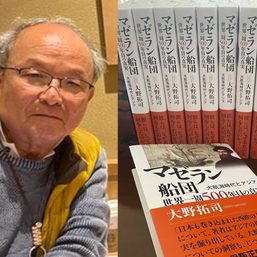
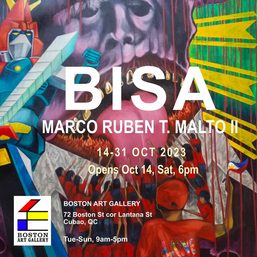
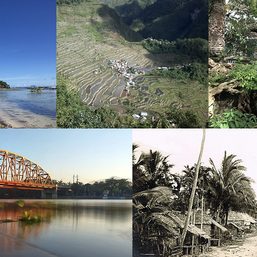
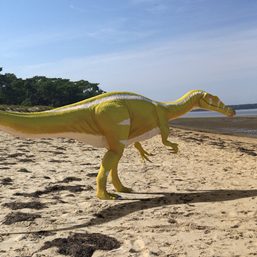

![[Time Trowel] Safeguarding the Ifugao Rice Terraces for future generations](https://www.rappler.com/tachyon/2024/05/batad-rice-terraces-may-25-2024.jpg?resize=257%2C257&crop_strategy=attention)

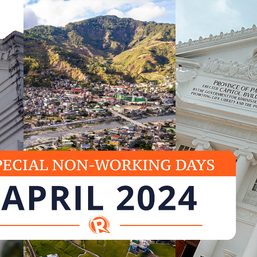

![[OPINION] From ‘Puyat’ to ‘Tulog’: Clout-chasing street signs disrespected history](https://www.rappler.com/tachyon/2024/07/gil-puyat-july-26-2024.jpg?resize=257%2C257&crop=389px%2C0px%2C1080px%2C1080px)


![[Time Trowel] Yamashita gold is a myth, and treasure hunting is not archeology](https://www.rappler.com/tachyon/2024/06/myth-yamashita-treasure-june-14-2024.jpg?resize=257%2C257&crop=435px%2C0px%2C1080px%2C1080px)
Thanks to authors Stephen Acabado, etc., for their work: “Dispatching ‘prehistory’ for an inclusive history.” It made me realize that the history subjects that were taught to me were “Eurocentric” in nature. But at that time, nobody ever questioned it. I hope that this new approach will be adopted by both private and public educational institutions in our country.